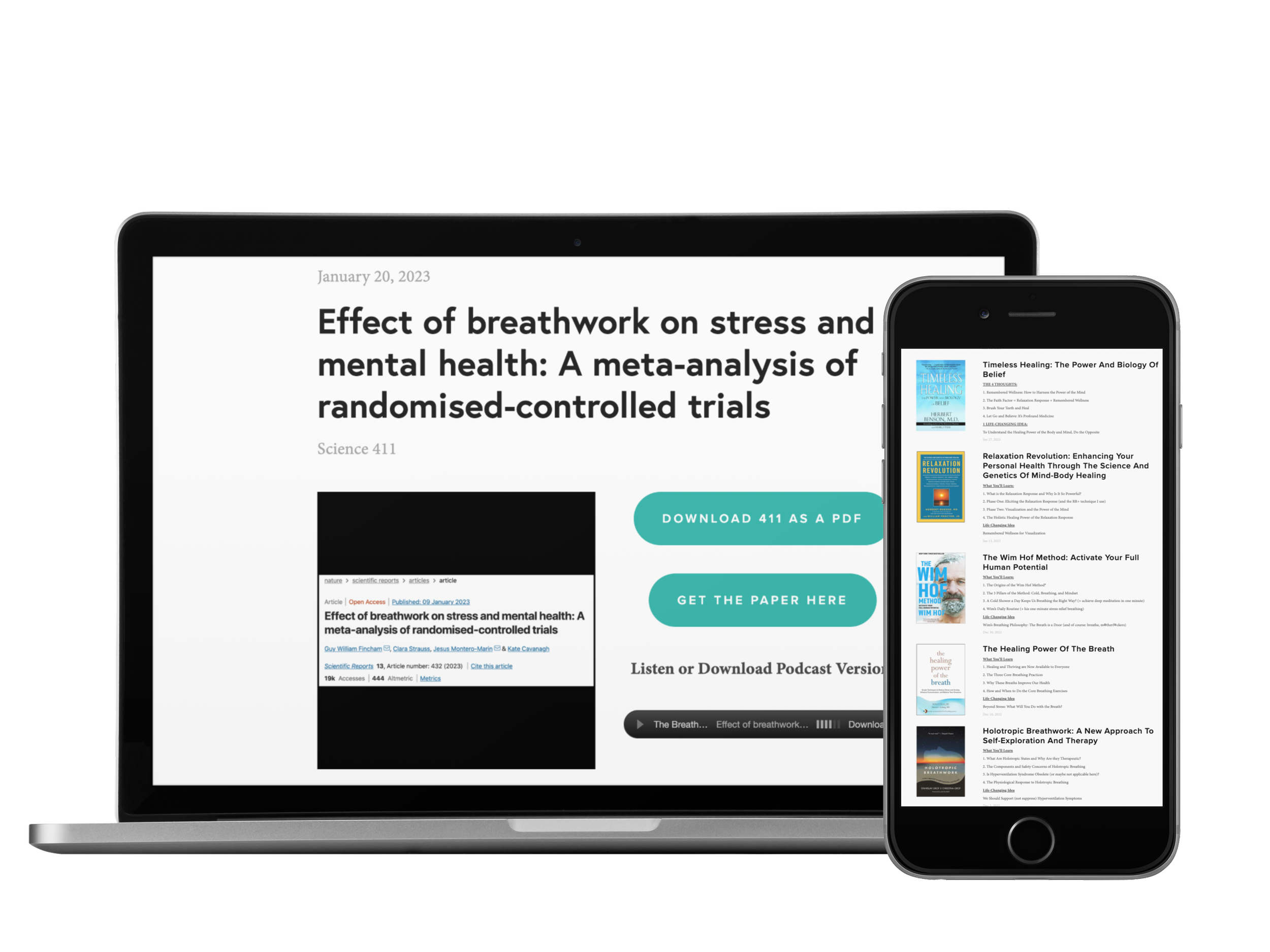Listen Instead of Reading
If you enjoy listening, you can subscribe to the audio version on Spotify, Apple Podcasts, and Audible so you don’t even have to look at the email 😊
Enjoy These Posts?
Reading Time: 1 min 48 sec
I hope the next 27’ish breaths are the most nourishing of your day.
4 THOUGHTS
1. A Lens Through Which We See the World
“How do emotions guide our actions?
The first is this: emotions transform how we perceive the world. … Each emotion is a lens through which we see the world.”
– Dacher Keltner, Awe: The New Science of…
“Each emotion is a lens through which we see the world.” This unintentionally yet beautifully explains the power of breathing. By giving us access to our emotions, breathing exercises can quite literally put a new lens on life, providing more clarity, focus, and joy.
Be sure to take advantage of this power this week 🙏
2. How All Contemplative Practices Work (deep rest)
“In conclusion, contemplative practices are a powerful tool for enhancing health. Routinely practicing a contemplative technique may reduce harmful stress-related threat arousal, promote cellular-level healing and restoration, and ultimately promote positive mental and physical health.”
- Deep Rest: An Integrative Model of How Contemplative Practices Combat Stress…
This paper could be the “science mascot” of my life 😂
It’s unique because it doesn’t favor one approach; instead, it offers a unifying framework—called deep rest—explaining the benefits of all contemplative practices (but slow breathing does play a crucial role).
If you feel so inspired, go give it a read. Or, read my 2 min 49 sec review (or listen to the podcast version) for as little as $5.
3. A Tiny Thought on Breathing Methods
Every method works when used correctly, but no method works for everybody.
4. Two Ideas to Contemplate on Breathing & Connection
“The heaven, the earth and I share one breath, but each manages it individually.” – Lao-Tzu
“It is quite a striking example of evolutionary balance and beauty that the trees around us that give off oxygen and the trees in our lungs that absorb it share a similar structure.” - Patrick McKeown
1 Quote
“The pace you set first thing in the morning is likely to stay with you through the day. If you get up early and set a calm, unhurried pace, it is much easier to resist getting speeded up later on as the pressures of the day close in on you. This simple step has profound effects.””
1 Answer
Category: Emotions
Answer: Across different people, these show similar patterns for different emotions and may be one way to distinguish states of joy, anger, fear, and sadness.
…
(Cue the Jeopardy! music.)
…
Question: What are breathing patterns?
In good breath,
Nick Heath, T1D, PhD
“Breathing is the compound interest of health & wellness.”
P.S. how to send emails
Nurture Your True Self
Learn to think, speak, and act in alignment with the person you want to be.
The Breathing App for Diabetes
This is the first program specifically made for people with diabetes to help manage their stress through breathing and mindfulness practices. In addition to the amazing program inside the app, we have some really neat things coming up, so sign up now!
Amazon Associate Disclosure
I’ve been recommending books for almost 6 years. Yet somehow, I just discovered that I could be an Amazon affiliate [face-palm]. In any case better late than never. Now, any Amazon link you click is an affiliate link. As an Amazon Associate, I earn from qualifying purchases. So, if you’d like to support my work, buying books through these links is helpful : )
* An asterisk by a quote indicates that I listened to this book on Audible. Therefore, the quotation might not be correct, but is my best attempt at reproducing the punctuation based on the narrator’s pace, tone, and pauses.





